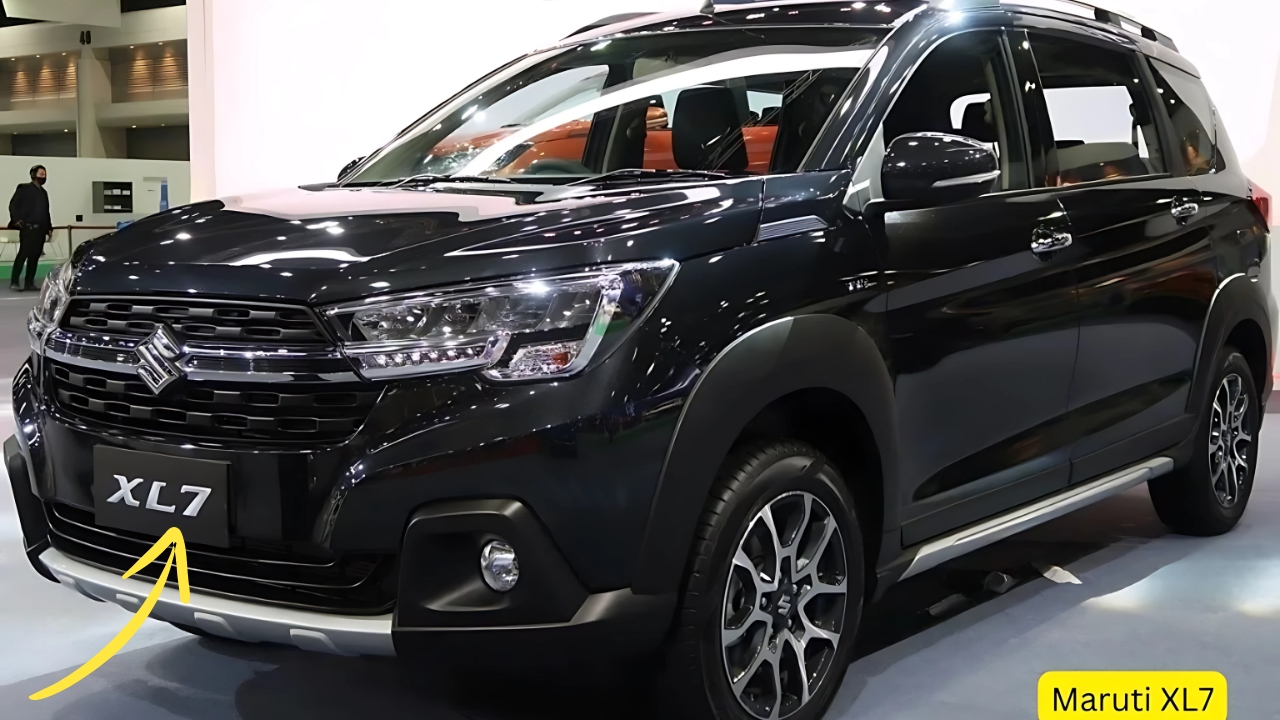Maruti XL7: The evolution of India’s SUV landscape has witnessed remarkable diversification over the past decade, with manufacturers striving to address increasingly specific lifestyle needs rather than offering one-size-fits-all solutions.
The Maruti Suzuki XL7 represents a particularly interesting approach to this segmentation – a vehicle that bridges the gap between compact crossovers and larger three-row SUVs through thoughtful packaging and design.
Having recently spent a week with this seven-seater during an extended family gathering in Pune, I’ve developed distinct impressions about where it succeeds in its mission and where compromises remain inevitable given its positioning.
Maruti XL7: Strategic Context: Understanding the XL7’s Role
To properly evaluate the XL7, one must first understand its strategic importance within Maruti’s expanding portfolio.
As the company’s entry in the increasingly important compact seven-seater segment, the XL7 provides a stepping stone between the Ertiga MPV on which it’s based and more substantial SUVs like the Grand Vitara.
This positioning acknowledges the growing demand for vehicles that offer occasional third-row seating without the bulk, expense, or fuel economy penalties of larger alternatives.
The XL7’s introduction through the Nexa premium retail channel rather than traditional Maruti dealerships further emphasizes its upmarket aspirations, targeting urban families seeking practical transportation with more distinctive styling than conventional MPVs provide.
This strategic placement reflects Maruti’s recognition of how status considerations increasingly influence purchasing decisions even in fundamentally practical vehicle categories.
Design Execution: SUV-Inspired Distinction
The XL7’s exterior design successfully creates meaningful visual separation from its Ertiga sibling through SUV-inspired elements that enhance perceived capability.
The front fascia adopts a more upright grille with bold chrome accents and angular headlamps, while the redesigned bumper incorporates silver skid plate styling and more pronounced fog lamp housings.
These elements combine to create greater visual presence and a more rugged appearance despite shared underlying architecture.
In profile, the vehicle maintains the Ertiga’s practical proportions while incorporating black body cladding, roof rails, and slightly increased ground clearance (20mm higher at 180mm) that enhance the crossover aesthetic.
The 16-inch dual-tone alloy wheels feature a more aggressive design than those found on the Ertiga, filling the wheel arches effectively while maintaining appropriate proportions relative to the body.
What impresses most about the design approach is its restraint – rather than incorporating excessive styling elements that might appear contrived, the XL7 adopts just enough SUV cues to create distinction without surrendering the fundamental practicality that remains its core purpose.
During our family outings around Pune, the vehicle received appreciably more attention than standard MPVs, suggesting the design strategy successfully addresses the status considerations that often influence purchasing decisions in this segment.
Cabin Experience: Practical Premium
Step inside the XL7, and the interior reveals thoughtful enhancements over its Ertiga sibling. The dashboard architecture maintains its practical layout while incorporating darker materials, contrast stitching, and carbon fiber-patterned trim elements that create a more sophisticated ambiance.
Material quality demonstrates selective improvement in key touchpoints, with leatherette upholstery, soft-touch door armrests, and a leather-wrapped steering wheel enhancing perceived quality without excessive cost increases.
The seating configuration provides genuine flexibility, with the middle-row captain’s chairs in my test vehicle offering excellent comfort and individual armrests that enhance the premium experience for adult passengers.
These seats slide and recline to balance legroom between middle and third rows depending on occupant requirements, while the walk-through arrangement facilitates access to the rearmost seating without folding seats forward – a meaningful convenience for families with children.
During our extended family usage around Pune, this arrangement proved particularly valuable, with elderly parents appreciating the dignified, individual accommodation in the middle row while younger family members accessed the third row without assistance.
While the rearmost seats remain best suited for children or smaller adults during longer journeys, they proved entirely usable for average-sized adults during shorter trips around the city – genuine seven-passenger capability that justifies the vehicle’s classification.
Climate control effectiveness deserves particular mention, with the roof-mounted rear vents ensuring comfortable cabin temperatures throughout all three rows even in Pune’s warm climate.
This cooling efficiency significantly enhances the ownership experience in Indian conditions, where inadequate air conditioning can undermine otherwise competent vehicles.
Driving Dynamics: Urban Appropriateness
The XL7 shares its mechanical package with the Ertiga, featuring a 1.5-liter naturally aspirated petrol engine producing 105 horsepower and 138 Nm of torque.
This powertrain balances adequate performance with excellent efficiency, delivering smooth, linear power delivery that proves well-matched to urban and light highway usage.
The five-speed manual transmission in my test vehicle offered precise shifts with light clutch action well-suited to congested traffic conditions, though the four-speed automatic option might prove more appealing for primarily urban usage despite its technical obsolescence compared to more modern transmissions.
Performance proves entirely adequate for typical family duties, with reasonable acceleration from standstill and sufficient mid-range response for confident overtaking when not fully loaded.
With all seven seats occupied, progress becomes more measured, requiring thoughtful gear selection and momentum management, particularly on inclines – an inevitable compromise given the engine’s modest output and focus on efficiency rather than outright performance.
Ride quality represents a particular strength, with well-judged suspension tuning that absorbs urban road imperfections effectively while maintaining reasonable body control during directional changes.
The slightly increased ground clearance compared to the Ertiga proved valuable on Pune’s occasionally challenging roads, allowing confident navigation of modest obstacles without excessive caution.
Highway stability impresses at cruising speeds, with limited wind noise and confident straight-line tracking that reduces fatigue during longer journeys.
Steering response demonstrates appropriate weighting for a family-oriented vehicle, with light effort during parking maneuvers that increases naturally with speed to provide stability during highway travel.
The 5.2-meter turning radius, while inevitably larger than smaller vehicles, remains manageable in typical urban situations – a characteristic appreciated during navigation of Pune’s sometimes congested neighborhoods.
Value Proposition: Practical Premium
The XL7’s value proposition extends beyond mere specification comparisons to encompass total ownership experience.
Priced between approximately ₹11-13 lakh (depending on variant and transmission), it positions as a premium alternative to the Ertiga while undercutting larger seven-seat SUVs by substantial margins.
This pricing strategy acknowledges both the enhanced feature content and the practical advantages of more compact dimensions for primarily urban usage.
Maruti’s extensive service network provides reassurance for both urban owners and those venturing beyond metropolitan areas, while the proven mechanical package ensures maintainability even in locations with limited technical sophistication.
The 1.5-liter engine’s excellent fuel efficiency – consistently returning 15-16 km/l during our mixed-condition testing despite air conditioning use – creates meaningful operating cost advantages over larger alternatives, particularly for families covering substantial annual distances.
Maruti XL7: Practical Sophistication
The Maruti XL7 ultimately succeeds by embracing its nature as a practically-focused family vehicle enhanced with just enough SUV styling and premium features to address status considerations without compromising its fundamental mission.
Rather than attempting to be something it’s not – like a hardcore off-roader or performance vehicle – it delivers a thoughtfully calibrated package that addresses the authentic needs of urban families requiring occasional seven-seat capability.
For buyers who prioritize practical spaciousness, efficiency, and value over more subjective considerations like outright power or aggressive styling, the XL7 offers a compelling proposition that demonstrates the continuing relevance of thoughtfully executed crossovers in an increasingly SUV-obsessed market.
In acknowledging that most family vehicles spend the vast majority of their lives navigating urban environments rather than tackling challenging terrain, Maruti has created a vehicle that excels in scenarios that actually matter to its target audience.

